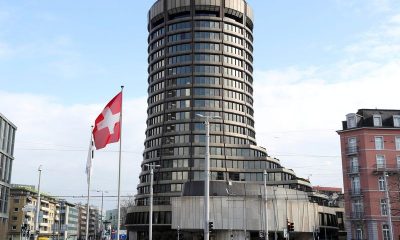Forex
Dollar on track for best quarter in a year


© Reuters. FILE PHOTO: Japanese yen and U.S. dollar banknotes are seen with a currency exchange rate graph in this illustration picture taken June 16, 2022. REUTERS/Florence Lo/Illustration/File Photo
By Karen Brettell and Amanda Cooper
NEW YORK/LONDON (Reuters) – The dollar was on track to post its biggest quarterly gain in a year on Friday and gains for the 11th consecutive week as investors priced in the likelihood of a still solid economy and higher rates for longer.
The greenback retraced most earlier losses against a basket of currencies to be only slightly lower on the day, following data that showed that U.S. consumer spending increased in August, but underlying inflation moderated, with the year-on-year rise in prices excluding food and energy slowing to less than 4.0%.
“Prices are higher on a monthly basis, but overall, inflation is moving lower. It’s good news for the market because the Fed is looking at the core rate,” said Peter Cardillo, chief market economist at Spartan Capital Securities in New York.
The dollar has gained on expectations that the U.S. economy will remain more resilient to higher interest rates and oil prices than other economies, after the Federal Reserve last week warned it may hike rates further and is likely to hold them higher for longer.
The , which tracks the U.S. currency against six others, fell 0.05% to 106.09 on Friday and is track to end the quarter up 3.13% and post an 11th straight weekly rally – its longest such run in nine years. It is down from a 10-month high of 106.84 on Wednesday.
Despite weaker levels on Thursday and Friday some analysts see the greenback as likely to continue to outperform.
“We view this dollar weakness as corrective in nature and is most likely driven by quarter-end rebalancing,” Win Thin, global head of currency strategy at Brown Brothers Harriman in New York, said in a note. “We’re not sure how long this correction lasts but investors should be looking for an opportunity to go long dollars again at cheaper levels.”
Meanwhile, a partial government shutdown is looming, which could affect the release of economic data and potentially dent economic growth.
Hardline Republicans in the U.S. House of Representatives on Friday rejected a bill proposed by their leader to temporarily fund the government, making it all but certain that federal agencies will partially shut down beginning Sunday.
A government shutdown would “undermine” U.S. economic progress by idling key programs for small businesses and children, and could delay major infrastructure improvements, U.S. Treasury Secretary Janet Yellen said on Friday.
The dollar rose 0.06% to 149.41 Japanese yen. It is down from an 11-month high of 149.71 on Wednesday. The greenback is up 3.54% against the yen this quarter, following an 8.66% gain last quarter.
The yen remains in focus as it trades near the 150 level, which is viewed as potentially spurring intervention from Japanese authorities.
Core inflation in Japan’s capital slowed in September for the third straight month mainly on falling fuel costs, data showed on Friday.
The euro gained 0.10% on the day to $1.0578, but is set for its worst quarter against the dollar in a year, with a 3.08% decline. The single currency has bounced from an almost nine-month low of $1.0488 on Wednesday.
Sterling rose 0.04% to $1.2206, having this week hit its lowest since March 17, after data on Friday showed Britain’s economic performance since the start of the COVID-19 pandemic has been stronger than previously thought.
The British currency is on track for a quarterly loss of 3.85% against the U.S. dollar, the worst performance in a year.
========================================================
Currency bid prices at 3:00PM (1900 GMT)
Description RIC Last U.S. Close Pct Change YTD Pct High Bid Low Bid
Previous Change
Session
Dollar index 106.0900 106.1600 -0.05% 2.512% +106.2400 +105.6500
Euro/Dollar $1.0578 $1.0567 +0.10% -1.29% +$1.0617 +$1.0558
Dollar/Yen 149.4100 149.3000 +0.06% +13.95% +149.5000 +148.5300
Euro/Yen 158.05 157.74 +0.20% +12.65% +158.3300 +157.4600
Dollar/Swiss 0.9153 0.9152 +0.02% -1.01% +0.9163 +0.9093
Sterling/Dollar $1.2206 $1.2202 +0.04% +0.93% +$1.2271 +$1.2181
Dollar/Canadian 1.3554 1.3487 +0.50% +0.04% +1.3576 +1.3417
Aussie/Dollar $0.6440 $0.6428 +0.18% -5.53% +$0.6501 +$0.6421
Euro/Swiss 0.9682 0.9667 +0.16% -2.15% +0.9692 +0.9646
Euro/Sterling 0.8664 0.8659 +0.06% -2.04% +0.8680 +0.8643
NZ $0.6001 $0.5961 +0.69% -5.47% +$0.6049 +$0.5964
Dollar/Dollar
Dollar/Norway 10.6640 10.7230 -0.30% +8.94% +10.7370 +10.5810
Euro/Norway 11.2823 11.3328 -0.45% +7.52% +11.3460 +11.2225
Dollar/Sweden 10.8979 10.9151 -0.04% +4.71% +10.9371 +10.8190
Euro/Sweden 11.5286 11.5336 -0.04% +3.40% +11.5585 +11.4763

 Forex3 years ago
Forex3 years agoForex Today: the dollar is gaining strength amid gloomy sentiment at the start of the Fed’s week

 Forex3 years ago
Forex3 years agoUnbiased review of Pocket Option broker

 Forex3 years ago
Forex3 years agoDollar to pound sterling exchange rate today: Pound plummeted to its lowest since 1985

 Forex3 years ago
Forex3 years agoHow is the Australian dollar doing today?

 Cryptocurrency3 years ago
Cryptocurrency3 years agoWhat happened in the crypto market – current events today

 World3 years ago
World3 years agoWhy are modern video games an art form?

 Commodities3 years ago
Commodities3 years agoCopper continues to fall in price on expectations of lower demand in China

 Economy3 years ago
Economy3 years agoCrude oil tankers double in price due to EU anti-Russian sanctions





























